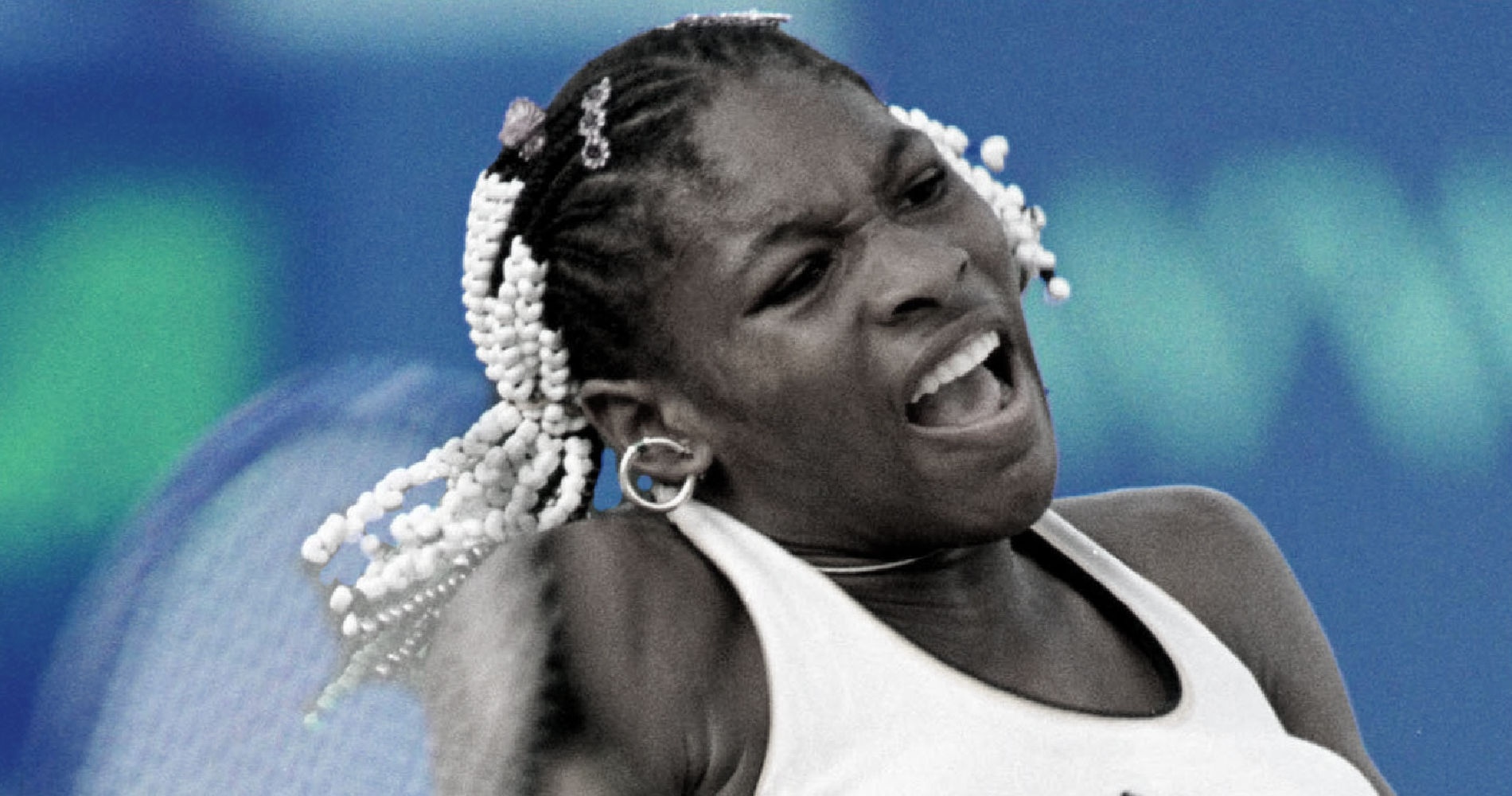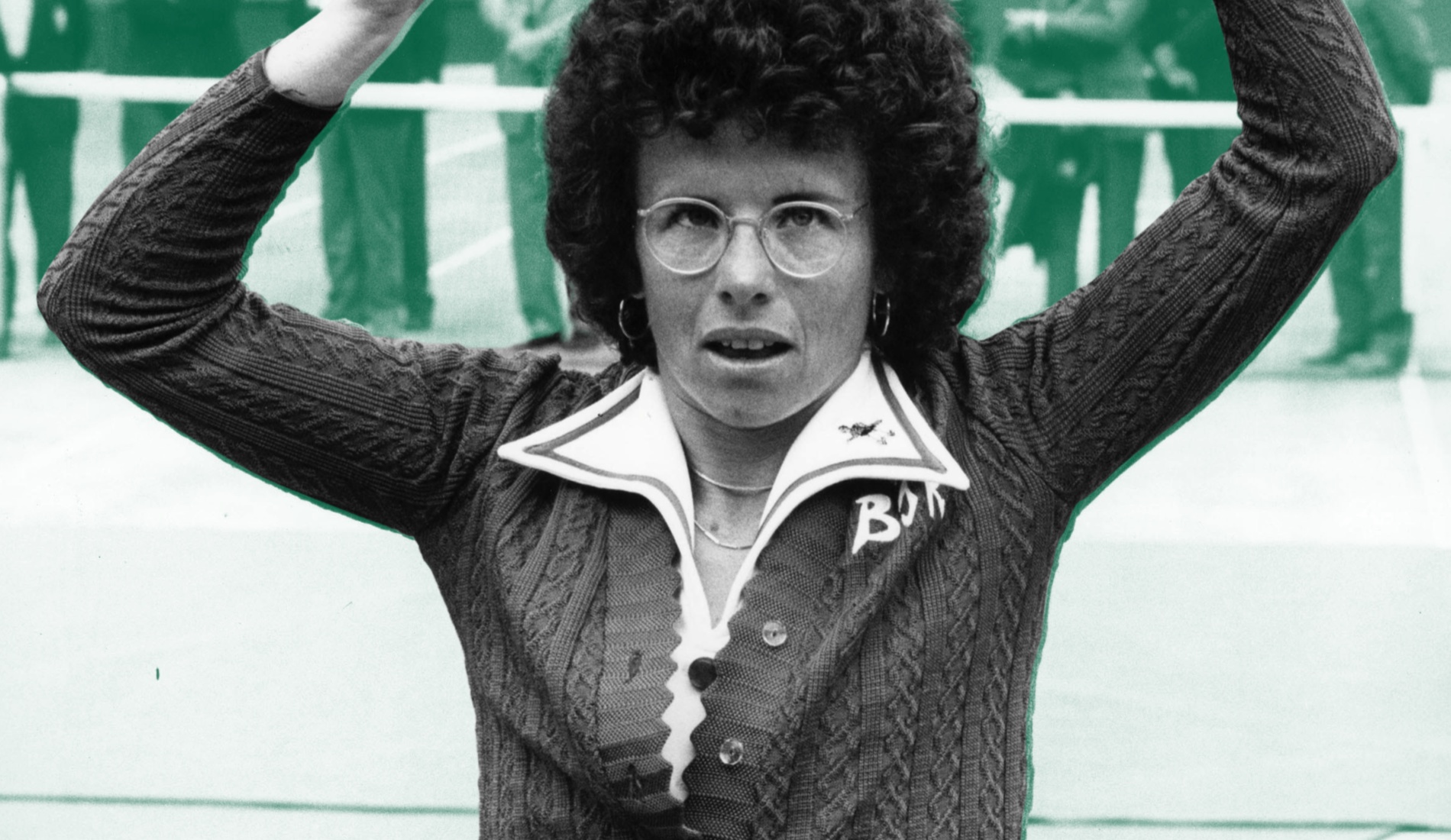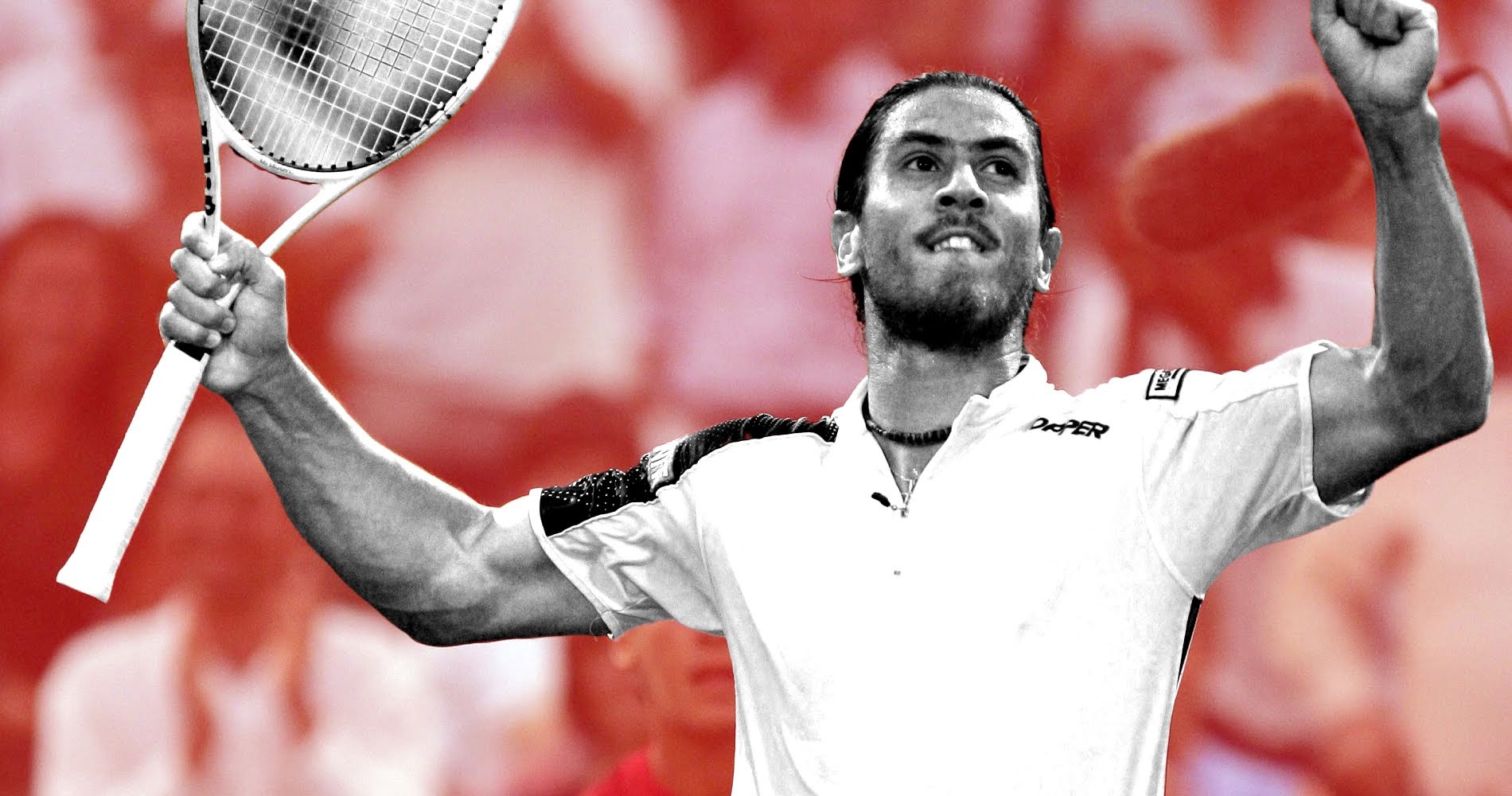September 20, 1973: The day Billie Jean King defeated Bobby Riggs in the famous “Battle of the Sexes”
Every day, Tennis Majors takes you back to one of the most iconic moments in tennis history. On this day in 1973, Billie Jean King set out to champion the cause of women’s tennis by taking on a 55-year-old Bobby Riggs, once the top-ranked player in the world who did not respect women’s tennis
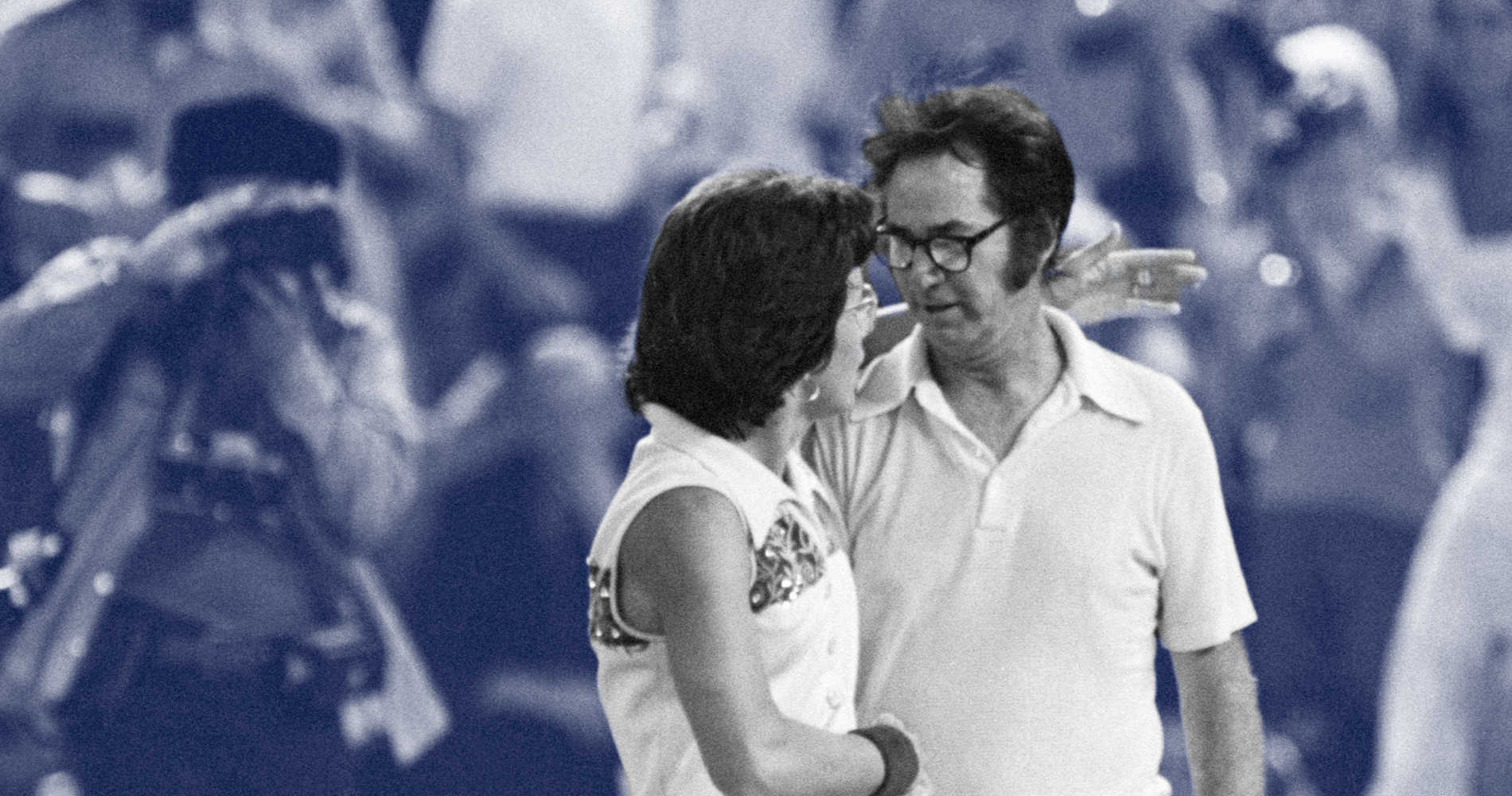 Battle of the Sexes OTD 09_20 (1)
Battle of the Sexes OTD 09_20 (1)
What happened exactly on that day? A “Battle of the Sexes” on a tennis court
On this day, September 20 in 1973, Billie Jean King defeated Bobby Riggs 6-4, 6-3, 6-3 to win the famous “Battle of the Sexes”. Played in front of 30,000 spectators and watched by millions of people on television, this match put an end to Riggs’ crusade against women’s tennis, which had started in the late 1960s and had peaked in May 1973 when he beat Margaret Court in an event that came to be known as “Mother’s Day Massacre.”
The players involved: Billie Jean King and Bobby Riggs
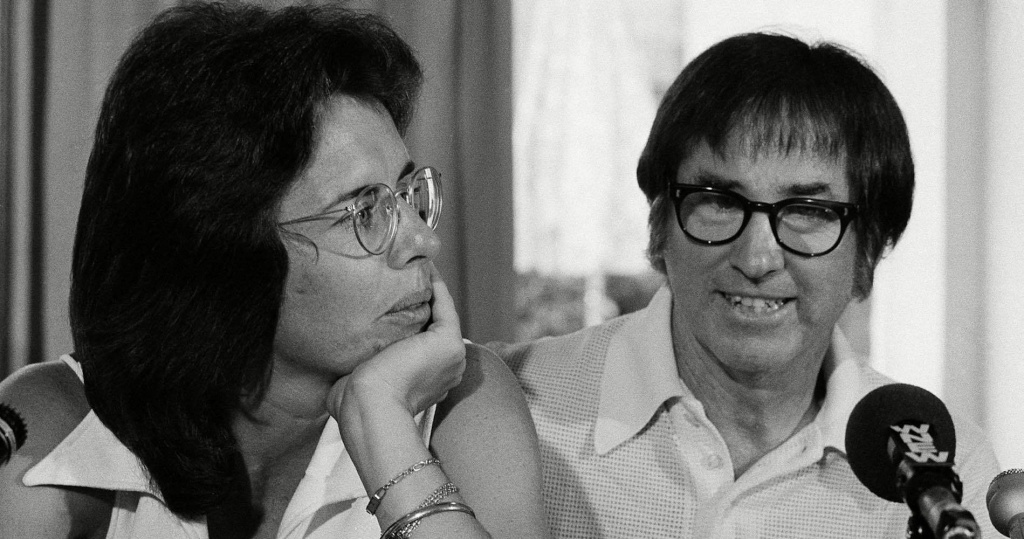
- Billie Jean King: legend on the court and pioneer off the court
Billie Jean King, born Billie Jean Moffitt in 1943, is not simply one of the greatest tennis players of all time. She’s also one of the most influential figures in tennis history due to the role she played in the development and promotion of women’s tennis. She created the Women’s Tennis Association (WTA), the first association to represent the interest of female tennis players. She was also a key player in the creation of the first women’s circuit sponsored by tobacco brand Virginia Slims.
The first female player in tennis history to earn more than $100,000 in one year (1971), she had already claimed 10 Grand Slam titles in singles, 12 in doubles and 9 in mixed doubles. In 1973, she was regarded as world No 1 for the fifth consecutive year (Note – The computer rankings were introduced in tennis only in 1973).
King has gone on to become an activist, a champion of all women’s sports, a leader in women’s rights and a the woman known for spearheading the equal prize money at the Grand Slams.
In 2023 she was celebrated at the US Open in honor of the tournament’s 50th year of equal prize money, a deal that King brokered, and which eventually forced the other three Grand Slams to follow suit.
- Bobby Riggs: the former world No 1 who did not respect women’s tennis
Bobby Riggs was born in 1918. The American had been world No 1 as an amateur, when he won Wimbledon and the US Open in 1939. That year at the All-England Club, he managed to win all the three possible titles: singles, doubles, and mixed doubles. He turned professional in 1940, but his career was then interrupted by World War II. In the late 1940s, touring and competing with players like Donald Budge and Jack Kramer, he was considered one of the very best tennis players in the world. After retiring in 1951, he stayed in contact with tennis as a promoter but was mainly known later for being a hustler and a gambler.
He claimed having made big money in 1939 betting on his own triple triumph at Wimbledon. In the early ’70s, disagreeing with King’s demands about equal pay, he started criticising women’s tennis in the most caricatural way, probably with the goal of garnering attention. “A women’s place is in the kitchen and the bedroom – and not necessarily in that order” would remain one of his most famous statements that earned him the nickname “male pig chauvinist.”
Eventually, at the age of 55, he decided to challenge King in her prime to prove the superiority of men’s tennis. At first, King declined and declared that she had no intention of facing him. He then challenged Margaret Court, who accepted, and on May 13, 1973, he outclassed her 6-2, 6-1.
The place: The Houston Astrodome in Texas
The long-awaited “Battle of the Sexes” between Riggs and King was held at the Houston Astrodome in Texas. It was the world’s first multi-purpose, domed sports stadium, and it officially opened in 1965. It served as home to the Houston Astros of Major League Baseball (MLB) to the Houston Oilers of the National Football League (NFL0, and also as part-time home of the Houston Rockets of the National Basketball Association (NBA) since 1971.
The facts: Billie Jean King felt more relief than joy after the win
Riggs had been stirring the pot about women’s tennis for a while. In 1973, he stated that the women’s tennis was inferior and that even at his current age of 55, he could still beat any of the top female players. Originally, Riggs aimed at King, whom he called “the sex leader of the revolutionary pack.” King had made herself famous for establishing the first women’s professional tour and demanding “equal pay for equal play.” Riggs, on the other hand, claimed this was nonsense. He backed his claim by challenging King to a winner-take-all match, trying to provoke her as she didn’t seem interested :
“If she can’t beat a tired old man, she doesn’t deserve half her dough.”
Billie Jean King did not take the bait. She knew how much was at stake there: if she was to lose, her cause would be lost. The risks were too high.
Unlike King, Court was not interested in the fight for women’s rights. She stepped in, negotiated with Riggs to raise the prize money and accepted the challenge. On May 13, 1973, she was destroyed by Riggs 6-2, 6-1.
It’s a battle of the sexes and the gladiator of the men happens to be me, a 55-year old man with one foot in the grave.
Bobby Riggs
The self-proclaimed male pig chauvinist, beside himself with excitement, boasted, “Now I want King bad. I’ll play her on clay, grass, wood, cement, marble or roller skates. We got to keep this sex thing going.”
When King found out that Court had been heavily defeated, she knew that she had no choice but to accept the challenge. She could no longer avoid Riggs. She had herself said that if Court was beaten, she would have to face Riggs herself.
If the first Battle of Sexes had been a popular sports event, the second one turned out to be the biggest tennis event ever held in the United States. The American Broadcasting Company paid $700,000 to televise the $100,000 winner‐take‐all tennis match between Riggs and King in prime viewing time. Australian legend Rod Laver criticised it for making a spectacle of tennis instead of enhancing it.
“This isn’t just a tennis match,” declared Riggs in the pre-match press conference. “It’s a battle of the sexes and the gladiator of the men happens to be me, a 55-year old man with one foot in the grave.”
Riggs had certainly won the talking competition. Ready to say anything to draw attention, he went as far as saying that he wanted “to prove that women are lousy, they stink and they don’t belong on the same court as a man.”
Despite his confidence, the word had spread before the match that the 1939 Wimbledon champion was not in the same shape as in May, when he beat Court. He had spent more time and energy promoting the show than practicing, and he was soon going to regret it.
In fact, his opponent had been training specifically for this battle, “I’m taking this match very seriously. I love to win. I welcome the responsibility and the pressure. Bobby had better be ready.”
She played too well. She was playing well within herself, and I couldn’t get the most out of my game. It was over too quickly.
Bobby Riggs
King came first on a Cleopatra‐style gold dress while Riggs entered the stadium in a gold‐wheeled rickshaw in a circus-style entrance that Laver would have heavily disapproved of. 30,000 people were at the Astrodome and 90 million viewers had tuned into the match on television.
At the start, everything went well for Riggs, who called himself a “tennis hustler.” He was the first to break his opponent’s serve to lead 3-2, but couldn’t keep his own serve in the following game. Unlike Court, who had been caught unguarded by Riggs’ junk shots, King was prepared. She remained patient, and she engaged in long rallies from the baseline to wear down her 55-year old opponent. As a result, she won the first set 6-4 after she hit no less than 26 winners.
Although King was broken again in the beginning of the second set, it was now obvious that Riggs wasn’t physically fit to play several sets at that level of intensity. He dropped his baseline tactics and went for the net, but King passed him regularly without much trouble. The biggest tennis match in America’s history turned out to be one-sided, with the women’s world No 1 prevailing, 6-4, 6-3, 6-3.
“She was too good,” commented Riggs, not as excited as he was at the end of his win against Court. “She played too well. She was playing well within herself, and I couldn’t get the most out of my game. It was over too quickly.”
King later stated that she didn’t consider beating Riggs as an exceptional achievement but that winning had been a big relief for her.
“I thought it would set us back 50 years if I didn’t win that match. It would ruin the women’s tour and affect all women’s self-esteem. To beat a 55-year-old guy was no thrill for me. The thrill was exposing a lot of new people to tennis.”
What next? Billie Jean King and Bobby Riggs would remain friends till his death
In the following months, depressed by his loss, Riggs would pursue King for a rematch, which she would refuse. With time passing by, the two contenders of the Battle of the Sexes would create a lasting bond, and they would stay friends until Riggs passed away in 1995. The famous match would also be turned into a Hollywood movie which was released in 2017.
19 years after the match, in 1992, another “man vs woman” showdown, named The Battle of Champions, saw Jimmy Connors outplay Martina Navratilova. Although Connors was only allowed one serve and Navratilova could hit into half of the doubles alleys, he still won 7-5 6-2. Connors went on to claim later that he had put a million-dollar bet on himself dropping less than eight games.





